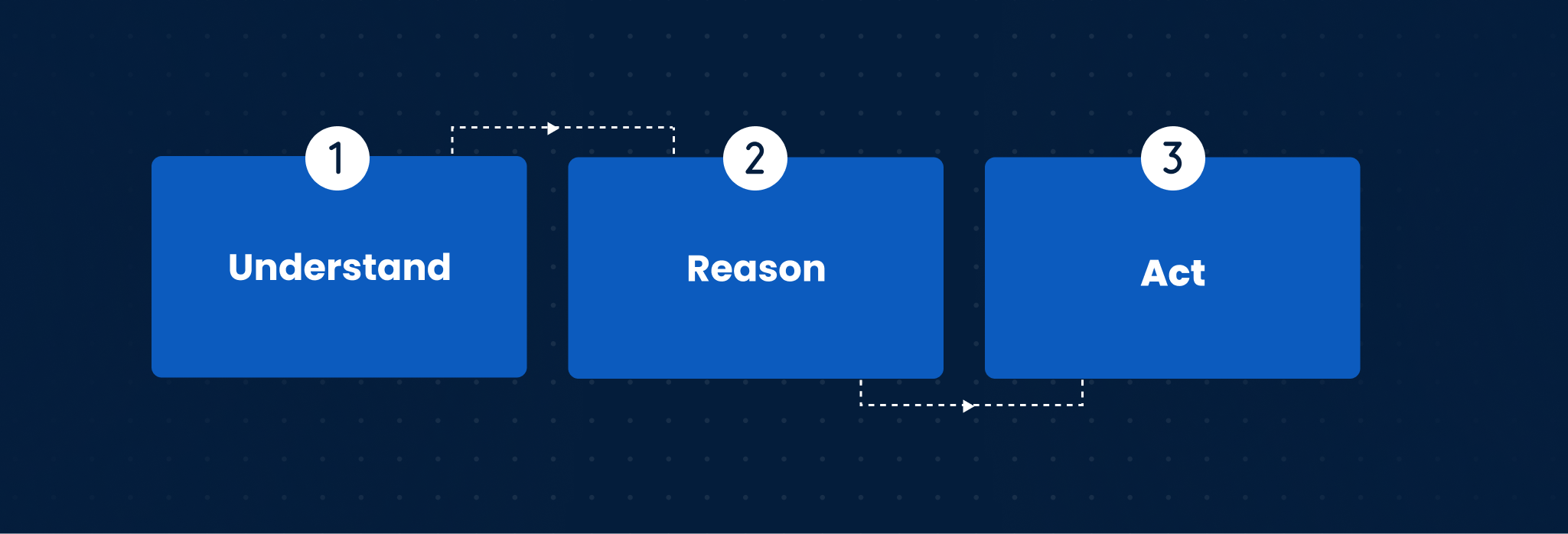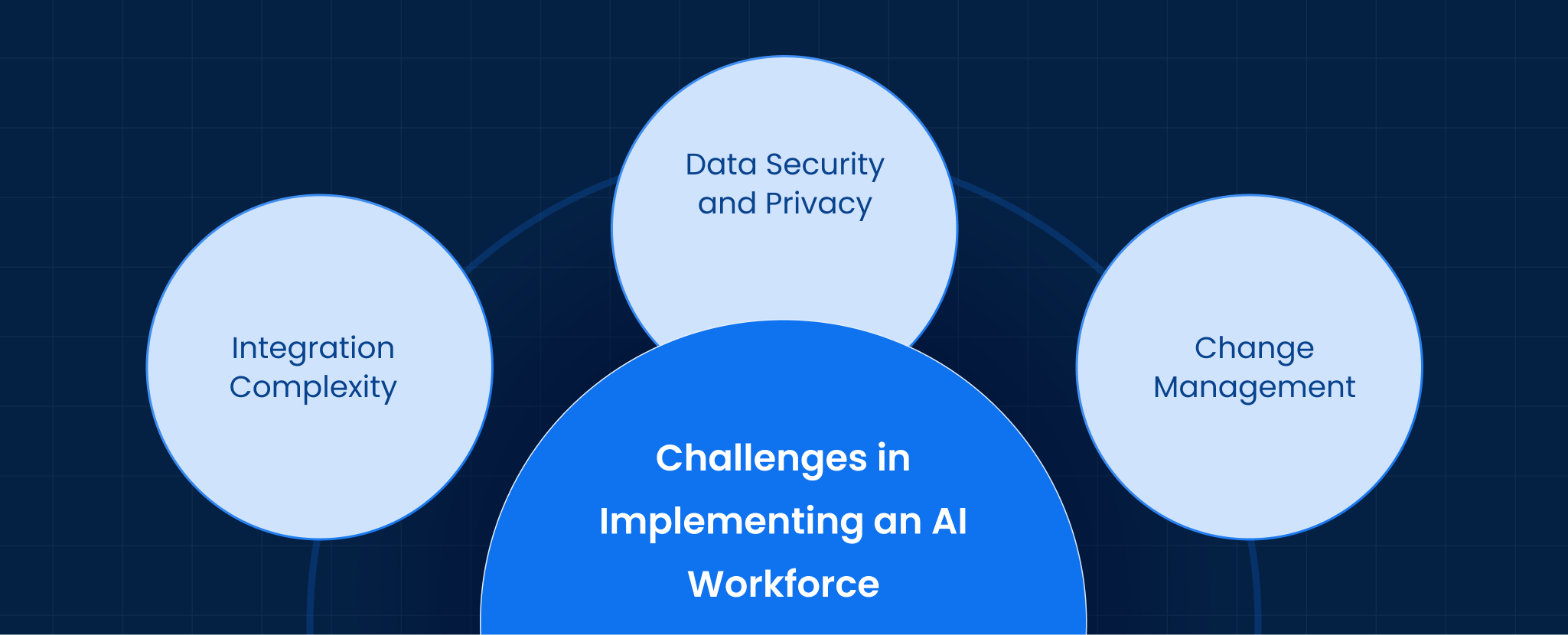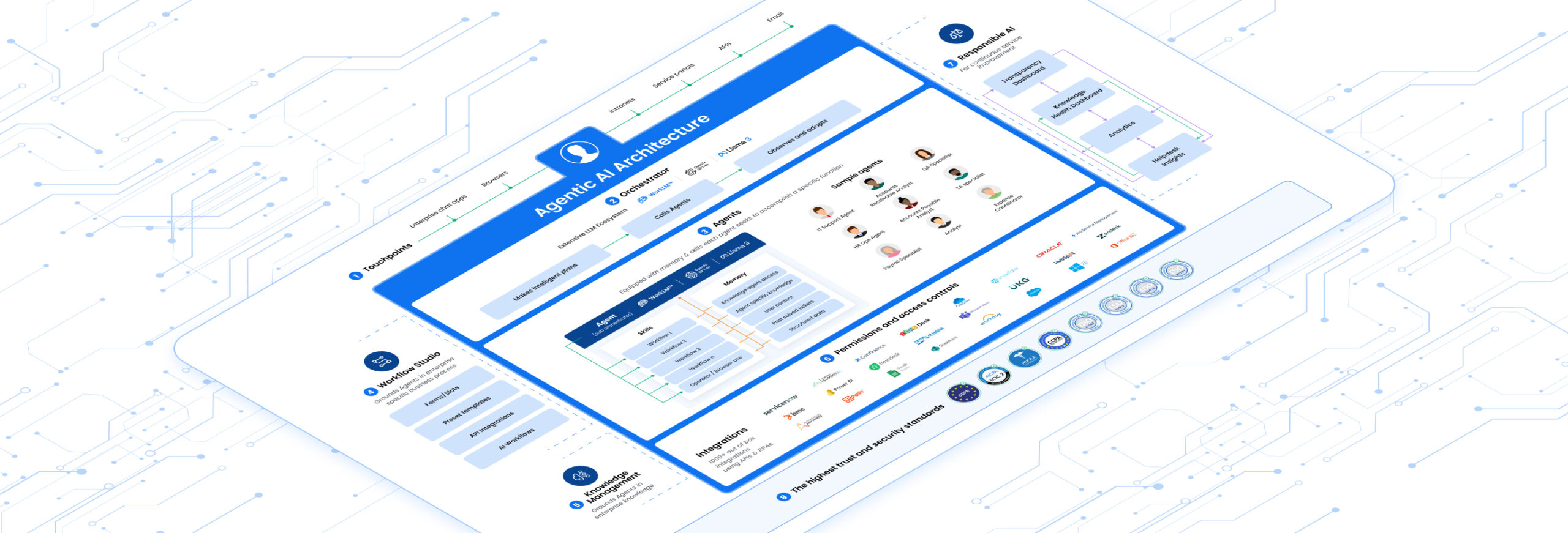Introduction
As a technology leader, you’re constantly balancing three critical demands: driving efficiency, elevating the employee experience, and future-proofing your operations. Your teams are likely swamped with an endless flood of support tickets, from password resets to benefits questions. This constant stream of repetitive tasks burns out your best people and slows down the entire organization. But what if you could introduce a new type of employee, one that works 24/7, resolves issues in seconds, and frees up your human talent for strategic work? That’s the power of the ai workforce.
The conversation around Artificial Intelligence has moved beyond just tools and analytics. We’ve entered the era of the ai workforce, a strategic approach that fundamentally redefines how work gets done in the enterprise.
What is an AI Workforce?
An ai workforce is a team of intelligent, autonomous software agents designed to execute end-to-end business processes, just like a human employee. Think of them not as simple chatbots that answer questions, but as digital team members. They have their own logins, access specific applications, and are empowered to take action to resolve employee requests on their own.
Unlike traditional automation that follows a rigid, pre-programmed script, an ai workforce uses advanced AI to understand context, make decisions, and learn from its interactions. For example, instead of just telling an employee how to request a new software license, a member of your ai workforce will understand the request, check for manager approval, provision the license in the correct system, and notify the employee when it’s ready.
How an AI Workforce Works
At its core, an ai workforce operates in a three-step cycle that mimics human problem-solving: Understand, Reason, and Act.
- Understand: It all starts with comprehension. When an employee submits a ticket through a platform like Slack, Microsoft Teams, or a service portal, the AI agent uses Natural Language Understanding (NLU) to grasp the user’s true intent, no matter how they phrase the request. It cuts through jargon and typos to figure out what the employee actually needs.
- Reason: Next, the agent accesses its knowledge base and integrates with your core enterprise systems (like ServiceNow, Workday, or Oracle). It analyzes the situation, considers the necessary steps, and formulates a plan. For instance, if an employee reports a laptop issue, the AI agent can check the device’s warranty status, review past service tickets, and decide whether to troubleshoot or immediately order a replacement.
- Act: Finally, the agent takes decisive action. This is the “agentic” part of Agentic AI. It performs tasks directly within your systems using secure connections. It can reset a password in Active Directory, process an expense report in your finance software, or update an employee’s home address in your Human Resources system. The entire process is seamless, and the ai workforce handles the resolution from start to finish.

Key Benefits of an AI Workforce for Enterprises
Integrating an ai workforce isn’t just an IT upgrade; it’s a strategic business decision that delivers powerful, measurable results.
- Drastic Cost Reduction: By automating high-volume, repetitive tasks, you can resolve employee issues at a fraction of the cost of manual intervention. This allows you to reallocate your support budget and human capital to more value-driven initiatives.
- Instant Resolution and 24/7 Availability: An ai workforce doesn’t sleep or take coffee breaks. Employees get immediate answers and resolutions to their problems, day or night. This eliminates frustrating wait times and provides a consistent, reliable support experience across all time zones.
- Supercharged Employee Productivity: When employees aren’t waiting hours or days for IT, HR, or Finance support, they can stay focused and productive. Faster resolutions mean less downtime and a smoother workflow for everyone in the company, directly impacting your bottom line.
- Enhanced Human Team Satisfaction: Your talented support staff didn’t join the company to spend their days resetting passwords. An ai workforce handles the monotonous work, freeing your human experts to tackle complex, challenging problems that require critical thinking and a human touch. This leads to higher job satisfaction and lower turnover.
Common Use Cases of an AI Workforce
An ai workforce is versatile and can be deployed across various departments to streamline operations. Here are a few common use cases:
| Department | Common Use Cases |
| IT Support | – Unlocking accounts and resetting passwords – Provisioning and de-provisioning software access – Troubleshooting VPN and network connectivity issues – Ordering and tracking hardware requests |
| Human Resources | – Answering questions about payroll and benefits – Processing leave requests and time-off balances – Generating employment verification letters – Managing employee onboarding and offboarding tasks |
| Finance | – Processing and checking the status of expense reports – Assisting with procurement and purchase order inquiries – Answering questions about company financial policies |
Challenges in Implementing an AI Workforce
While the benefits are clear, adopting an ai workforce requires a thoughtful approach. As a technology leader, you’re right to consider the potential hurdles:
- Integration Complexity: Your enterprise runs on a complex web of applications. Ensuring the AI can securely and reliably connect with all these systems is critical.
- Data Security and Privacy: An ai workforce needs access to sensitive systems. Maintaining robust security protocols and ensuring compliance with regulations is non-negotiable.
- Change Management: Employees and support teams need to trust the new system. A successful rollout involves clear communication and a strategy for managing the transition from old processes to new, AI-driven ones.
Addressing these challenges is key to unlocking the full potential of your ai workforce.

How Leena AI Builds and Supports an AI Workforce
At Leena AI, we’ve designed our platform specifically to overcome these challenges and deliver a powerful, secure, and seamlessly integrated ai workforce. We believe in moving beyond simple automation to create true “Agentic AI” that acts as a valuable extension of your team.
Our pioneering approach to Agentic AI in IT focuses on building an ai workforce that doesn’t just respond, it resolves. For example, instead of a chatbot giving an employee a link to a form for software access, our AI Agent initiates the entire workflow. It identifies the user, finds their manager in your HR system, sends an approval request via Slack or Teams, and, upon approval, directly provisions the software license in the relevant application.
Here’s how we create value:
- Pre-built Enterprise Integrations: We offer a library of over 1,000 pre-built connectors for the applications you already use, drastically reducing implementation time and complexity.
- Enterprise-Grade Security: Our platform is built with security at its core, ensuring your data is protected and your operations remain compliant.
- A Partnership Approach: We work with you to understand your unique workflows and customize your ai workforce to meet your specific business needs, ensuring a smooth and successful implementation.
By partnering with Leena AI, you aren’t just buying software; you are strategically deploying a purpose-built ai workforce designed for the modern enterprise.
Future of the AI Workforce in Enterprises
Looking ahead, the role of the ai workforce will only grow more sophisticated. We’re moving toward a future defined by two key trends:
- Proactive Support: The next evolution is an ai workforce that resolves issues before employees even know they exist. By analyzing system logs and user behavior, AI agents will identify potential problems, like a server reaching capacity or an expiring software license, and fix them proactively, preventing tickets from ever being created.
- The Human-AI Partnership: The goal isn’t to replace your human team but to elevate them. The future is a collaborative model where the ai workforce handles the bulk of transactional tasks, while human experts act as strategists, managing the AI, handling complex escalations, and focusing on improving the overall support ecosystem.
The ai workforce is no longer a futuristic concept; it’s a practical and powerful solution that leading enterprises are adopting today to gain a significant competitive edge.
Frequently Asked Questions (FAQs)
How is an AI workforce different from a standard chatbot?
A standard chatbot is primarily designed to provide information by pulling answers from a knowledge base. An ai workforce, on the other hand, is designed to take action. It integrates with your business applications to resolve issues and complete tasks from start to finish.
Is it difficult to deploy an AI workforce in our existing systems?
It doesn’t have to be. Platforms like Leena AI are built with integration in mind, offering pre-built connectors for hundreds of popular enterprise applications. This “plug-and-play” approach significantly simplifies the deployment of your ai workforce.
Is an AI workforce secure?
Absolutely. Enterprise-grade ai workforce solutions are built with robust security measures, including data encryption, access controls, and compliance with international standards to ensure your company and employee data remains safe.
How do you measure the return on investment of an AI workforce?
The return on investment for an ai workforce is measured through several key metrics, including the reduction in ticket resolution time, lower operational costs per ticket, increased employee productivity (less time waiting for support), and improved employee satisfaction scores.
Will an AI workforce replace our existing IT support team?
No, the goal of an ai workforce is to augment, not replace, your human teams. By automating repetitive tasks, it frees up your valuable human experts to focus on more complex, strategic initiatives that require their unique problem-solving skills.
What kind of training is needed for my team to manage an ai workforce?
Modern ai workforce platforms are designed with user-friendly, no-code interfaces. Your team will need training on how to oversee the AI agents, monitor their performance, and manage escalations, but they won’t need to be AI experts or programmers to successfully manage the system.
Can the AI workforce handle requests in multiple languages?
Yes, a sophisticated ai workforce is multilingual. It can understand and respond to employee requests in their native languages, which is essential for large, global companies.













